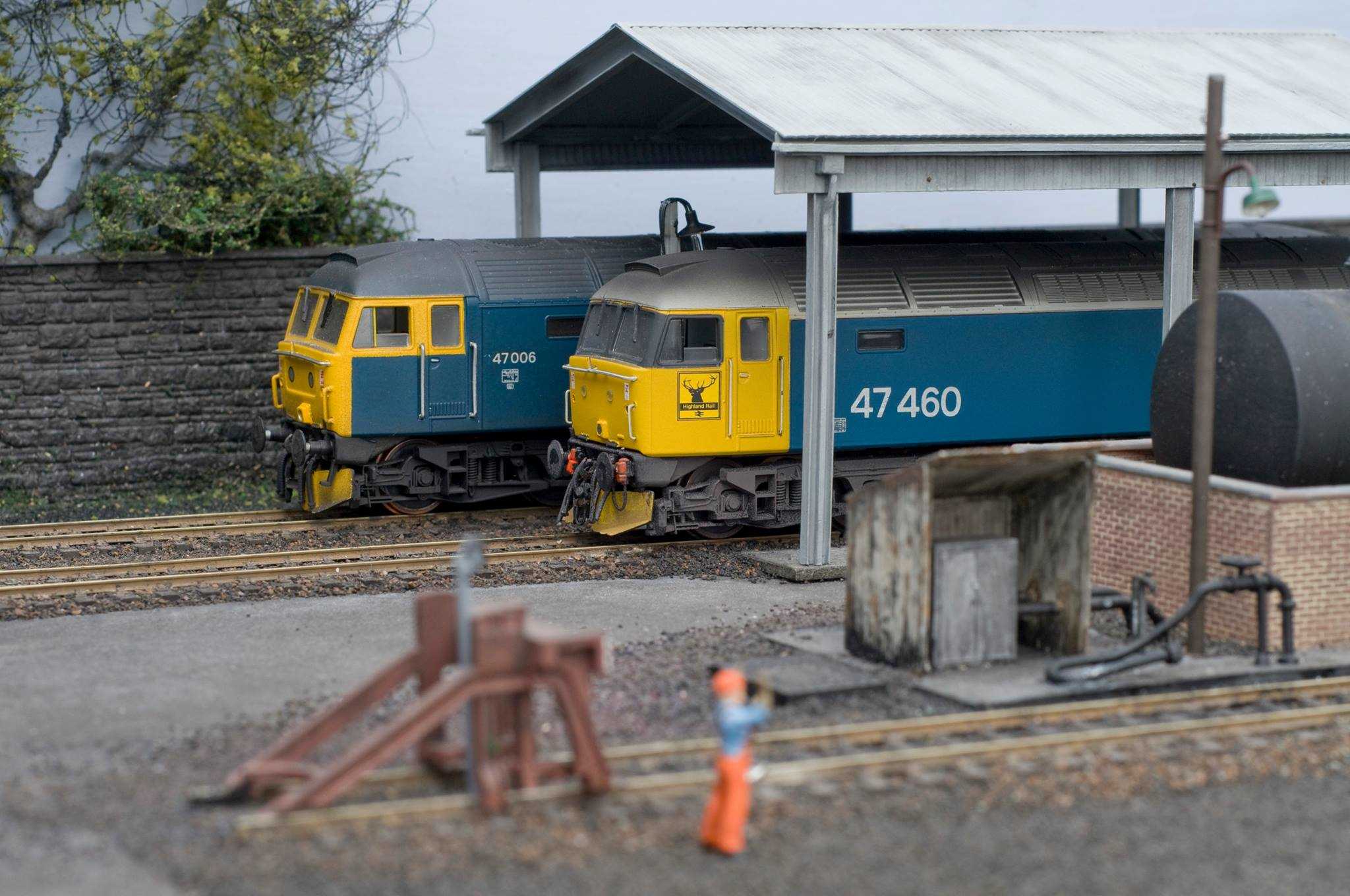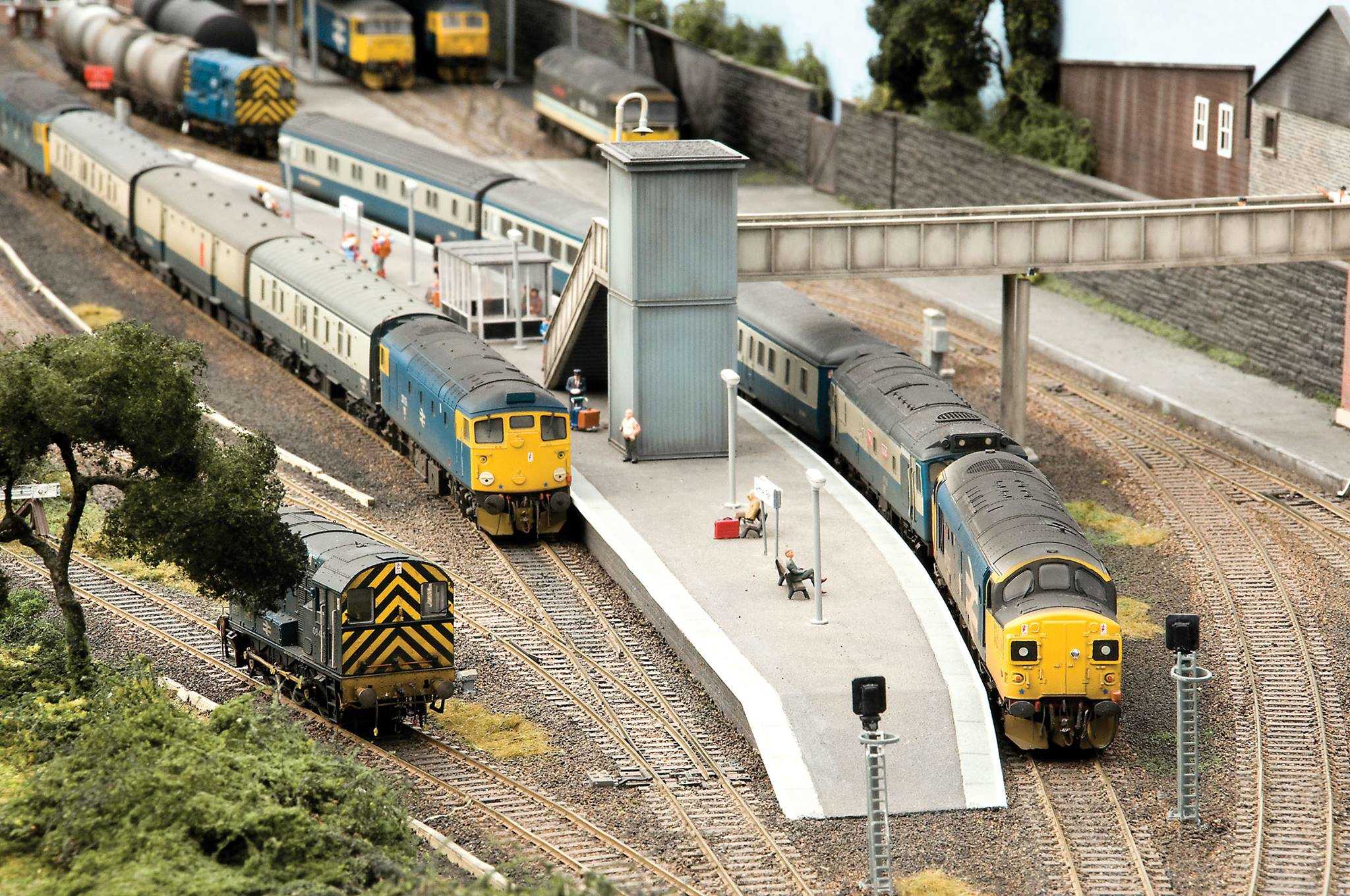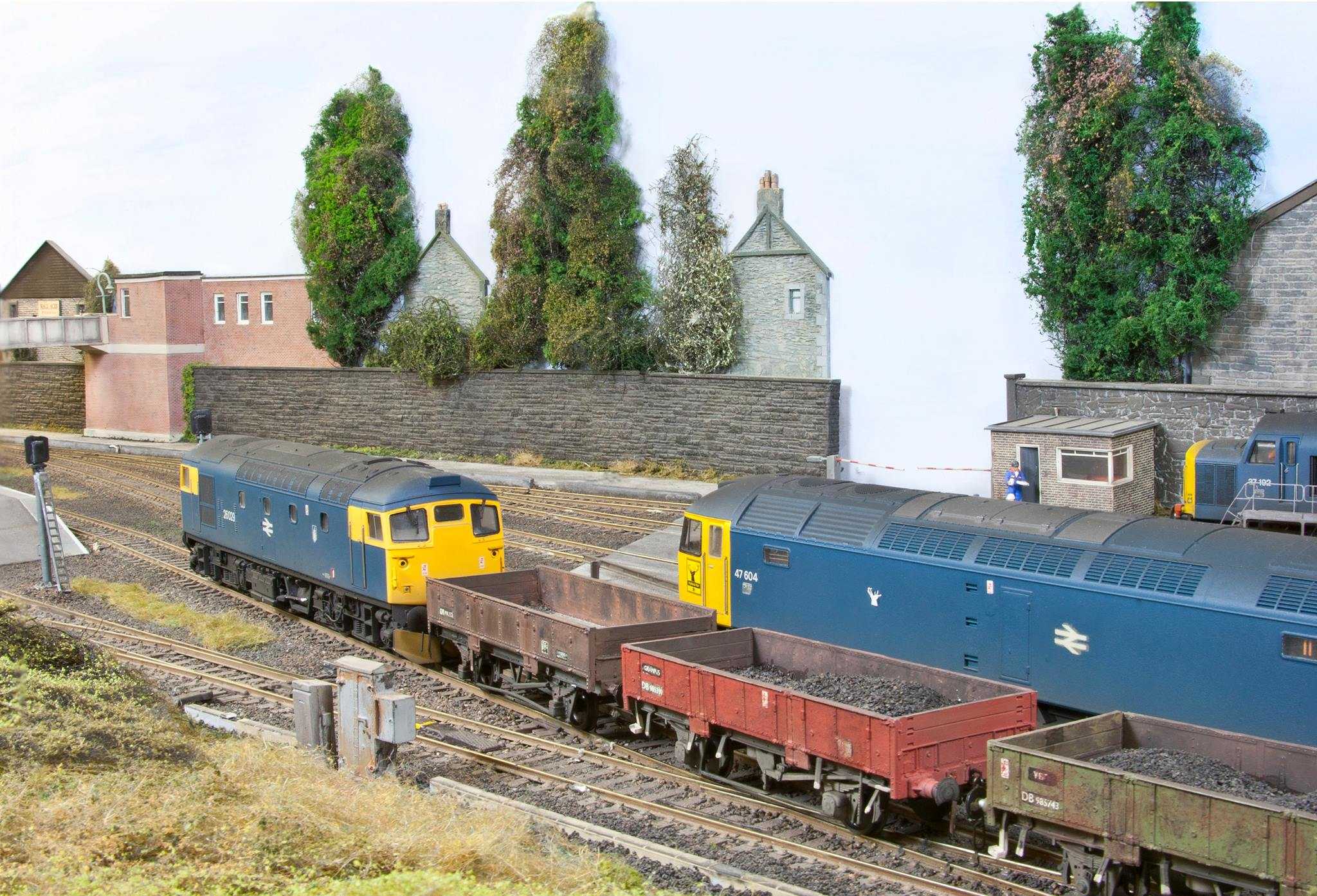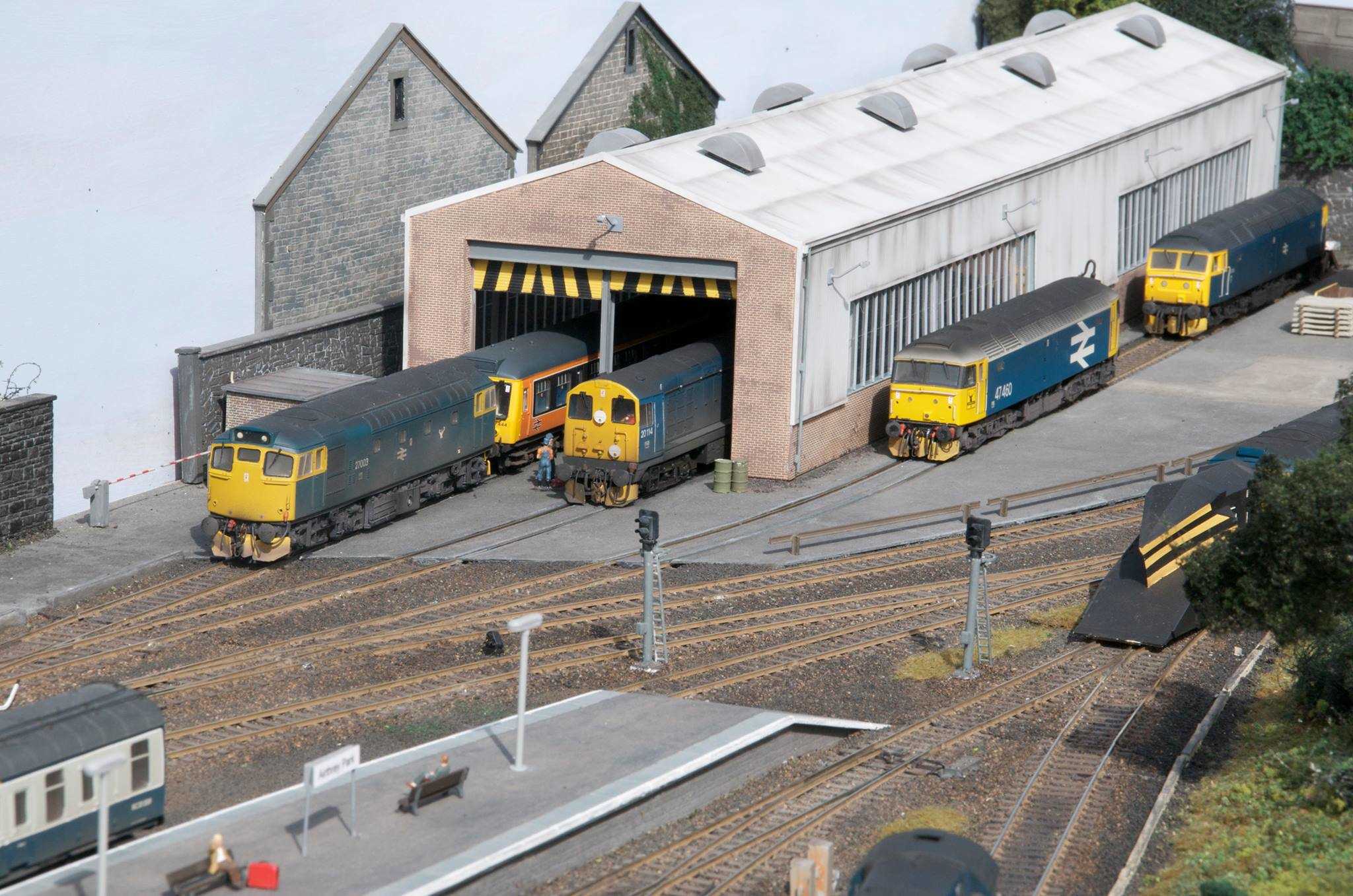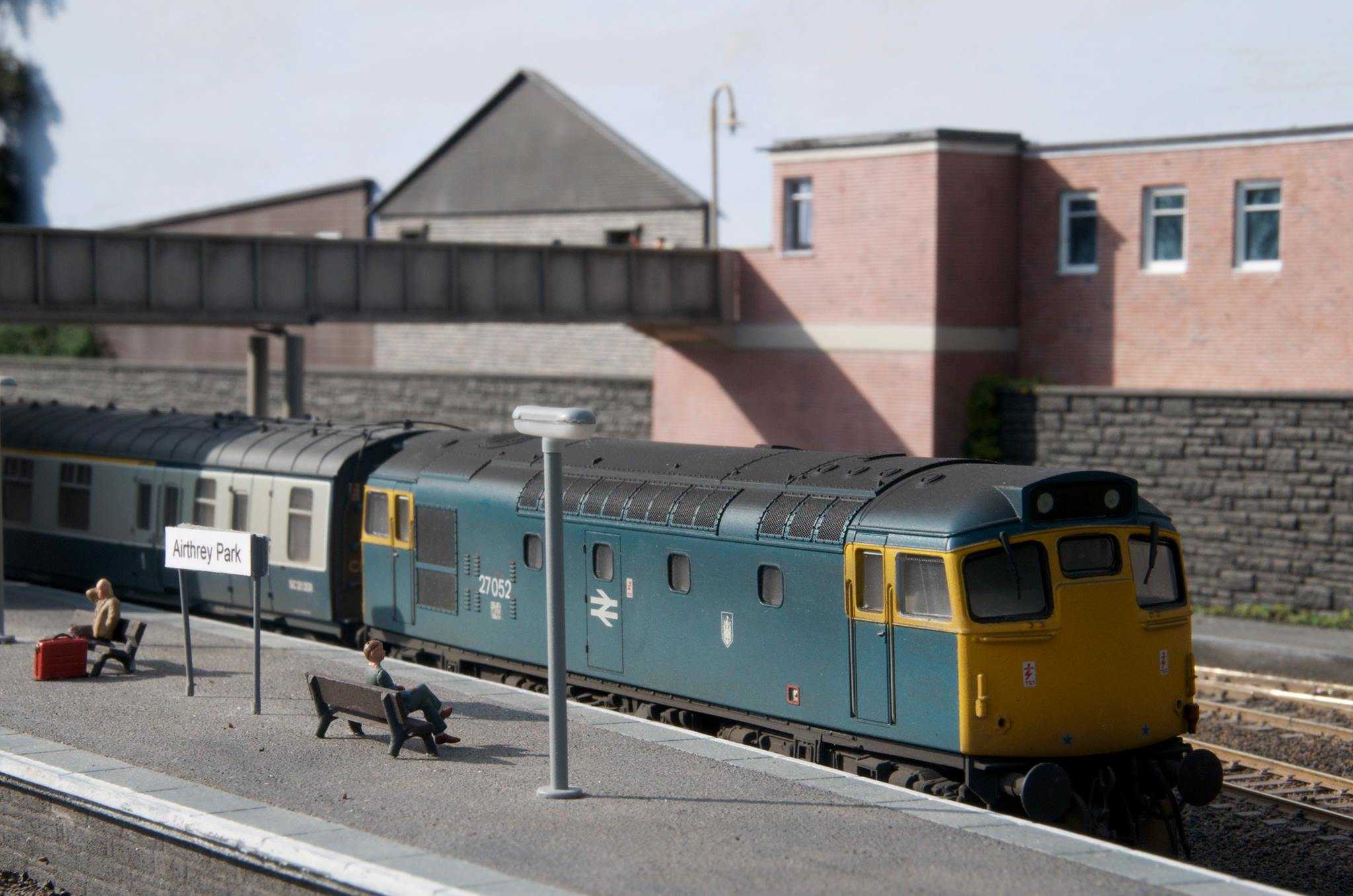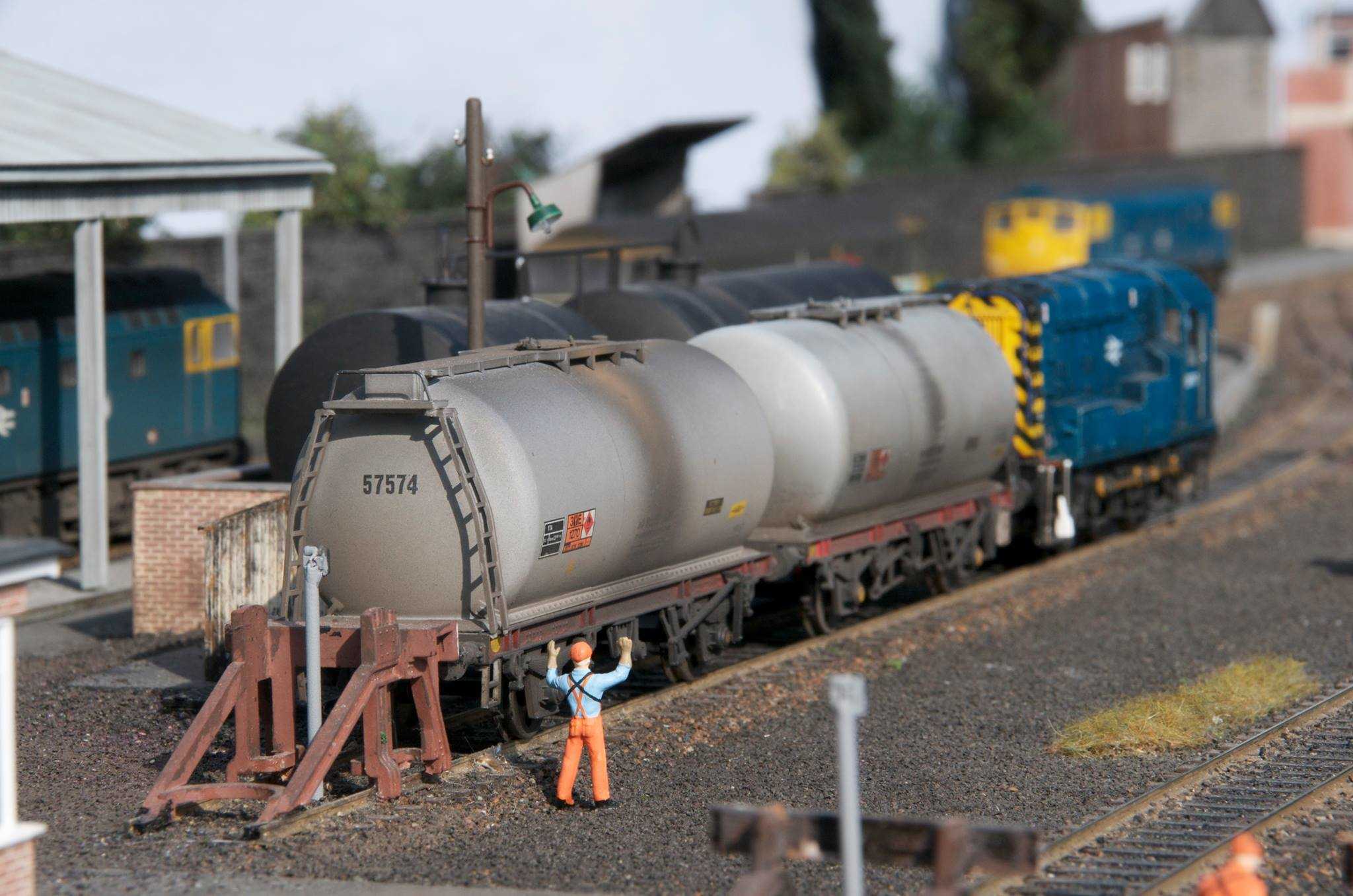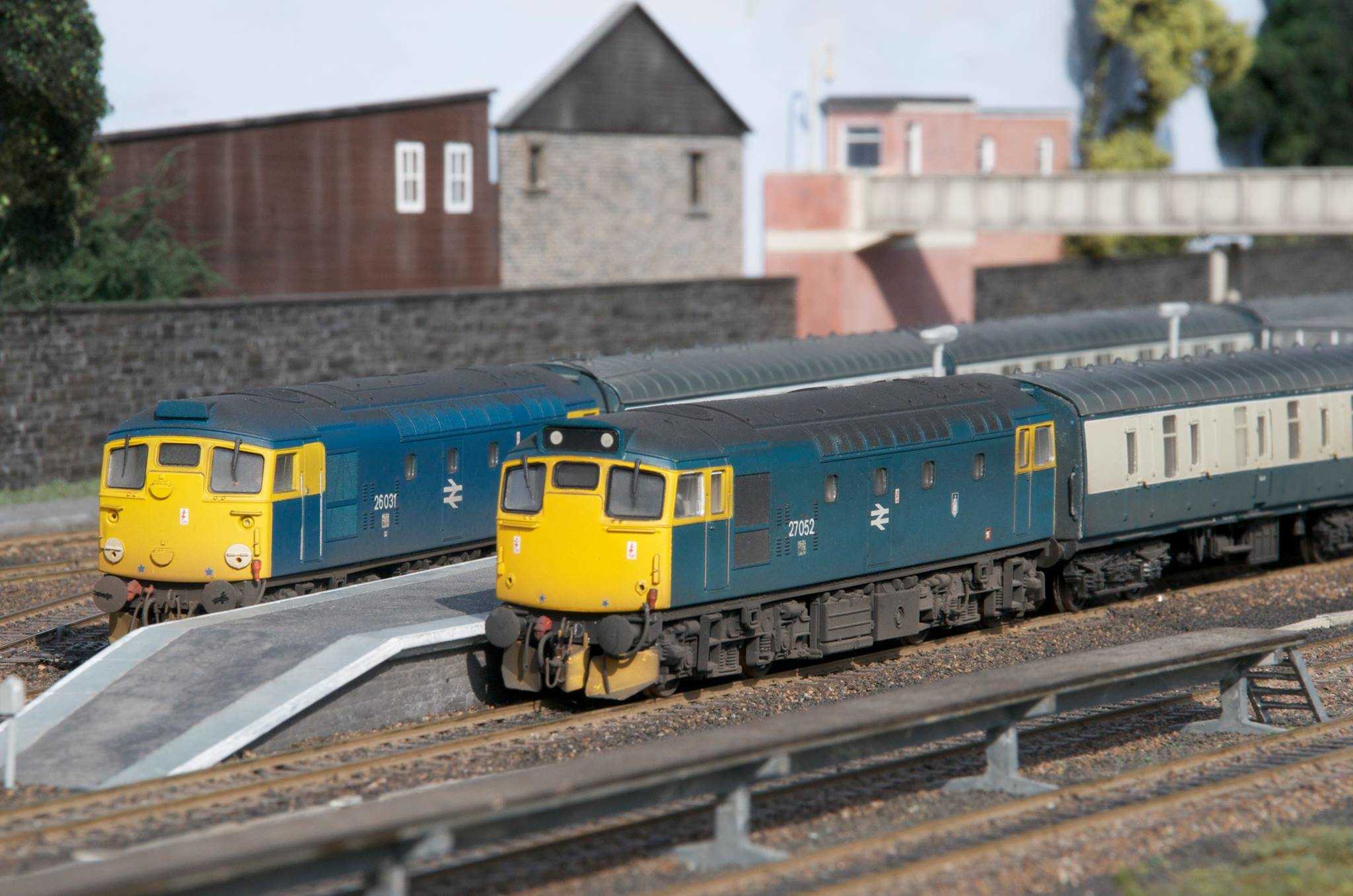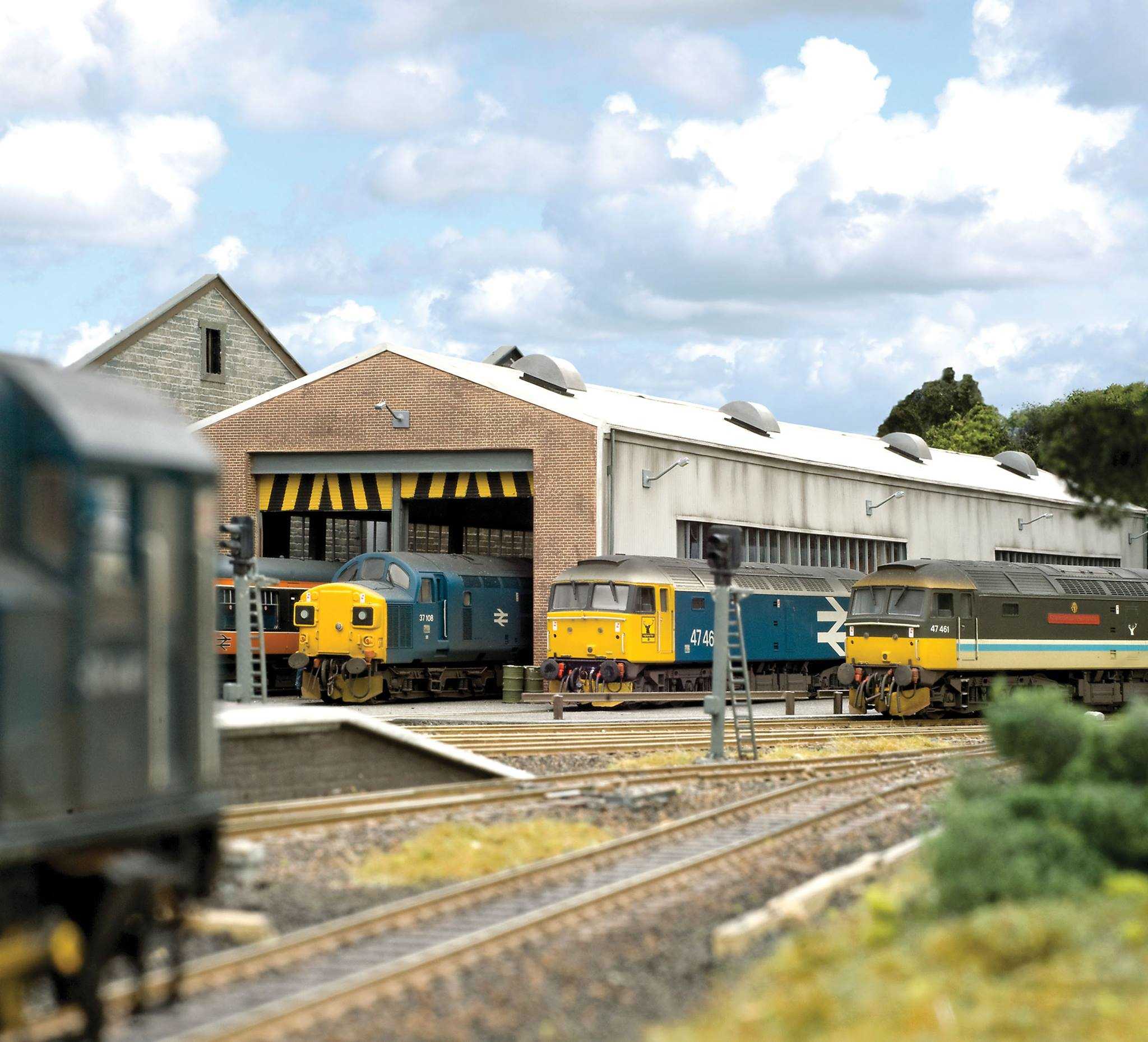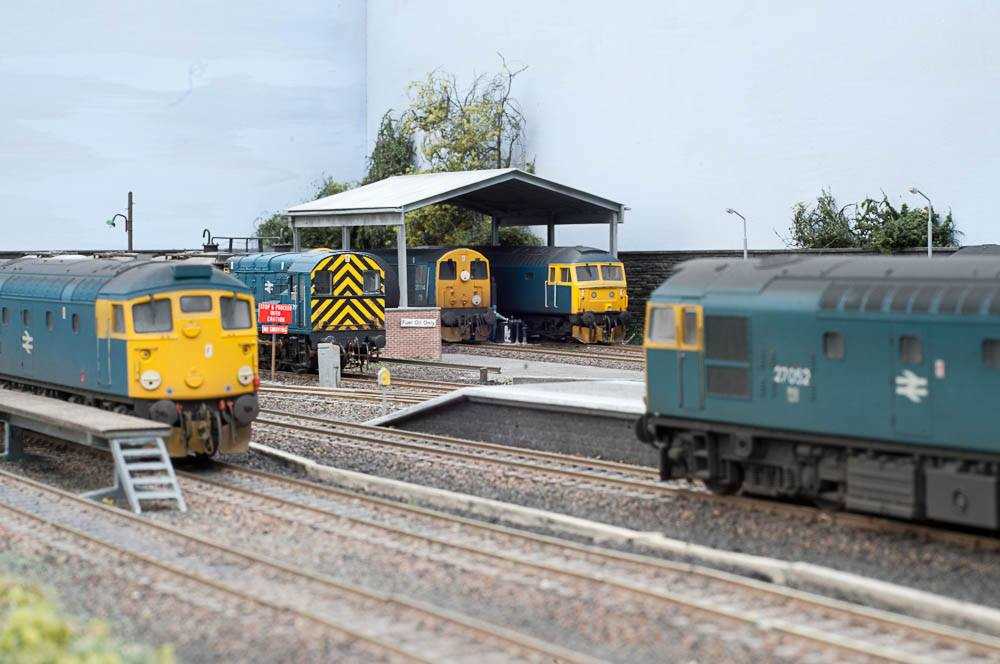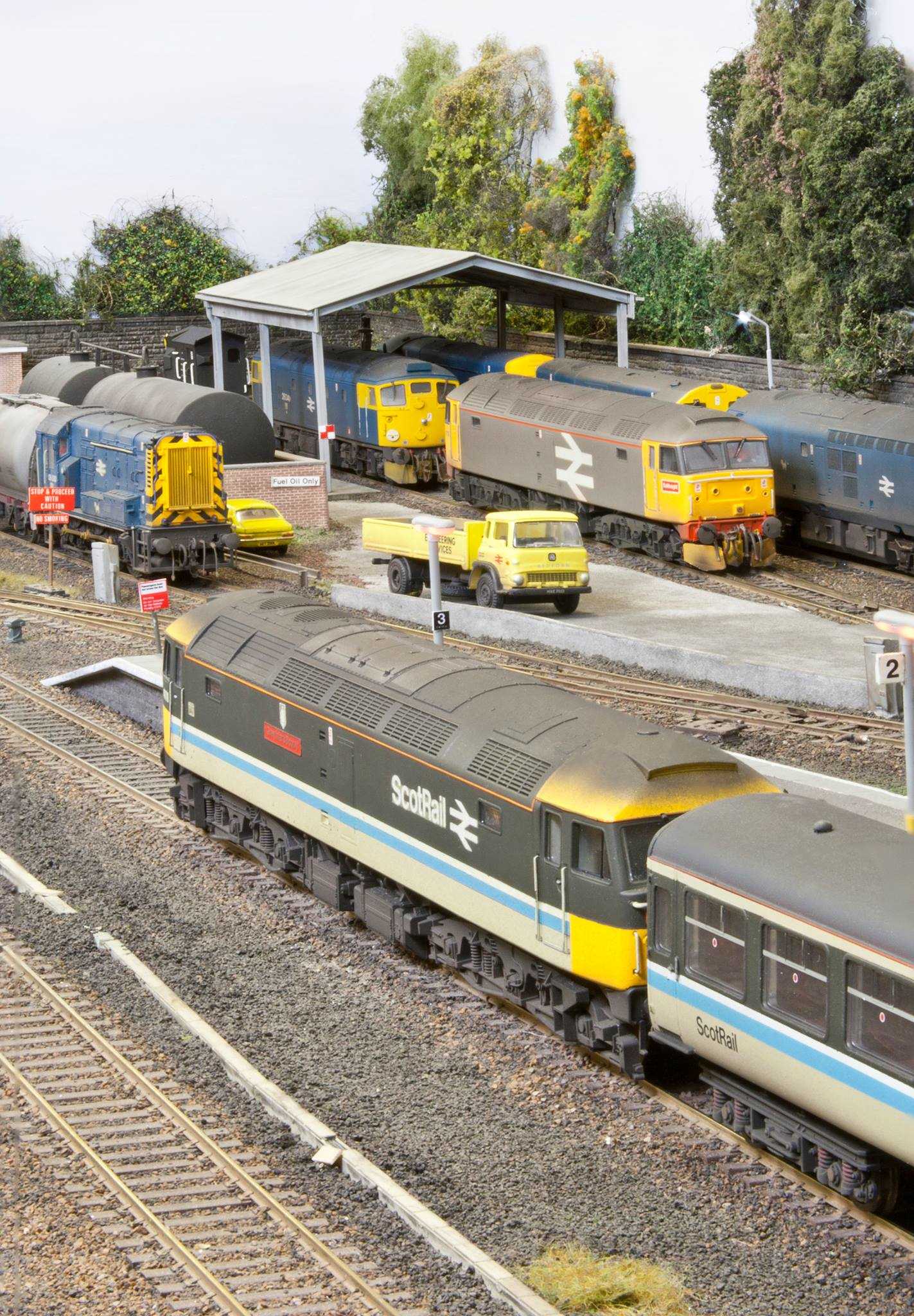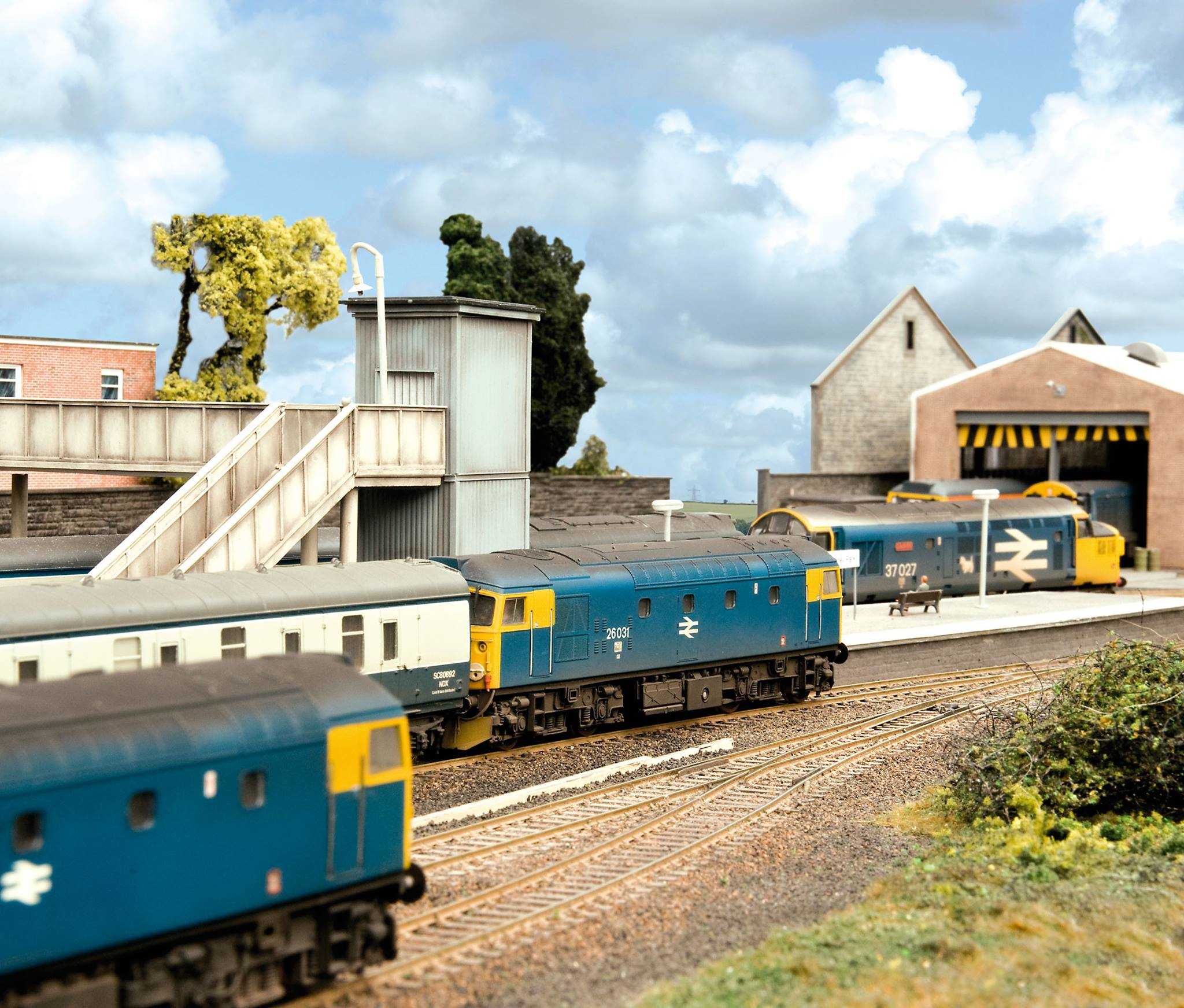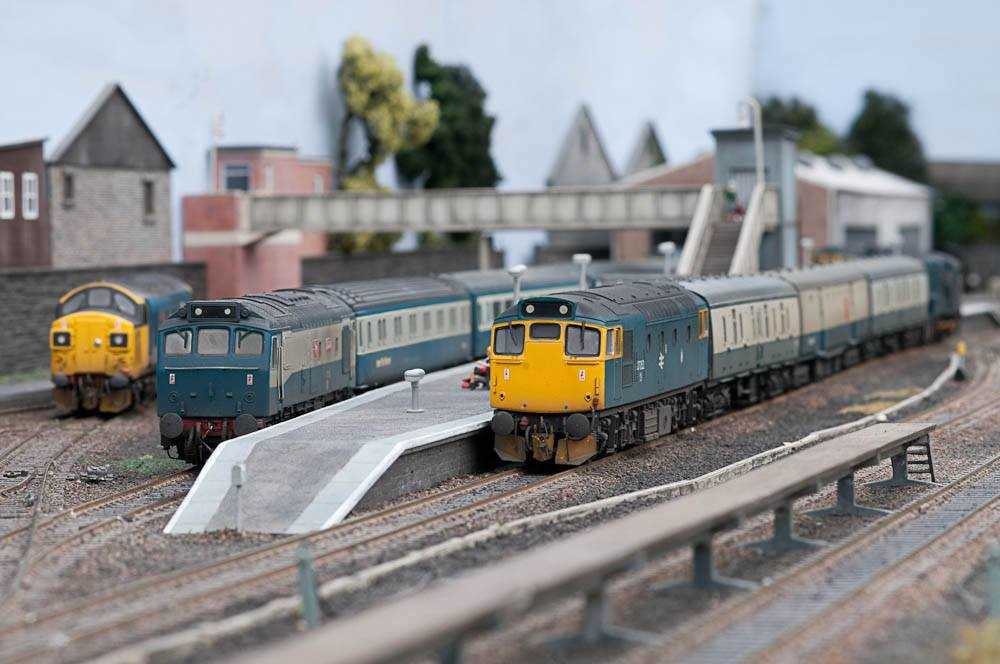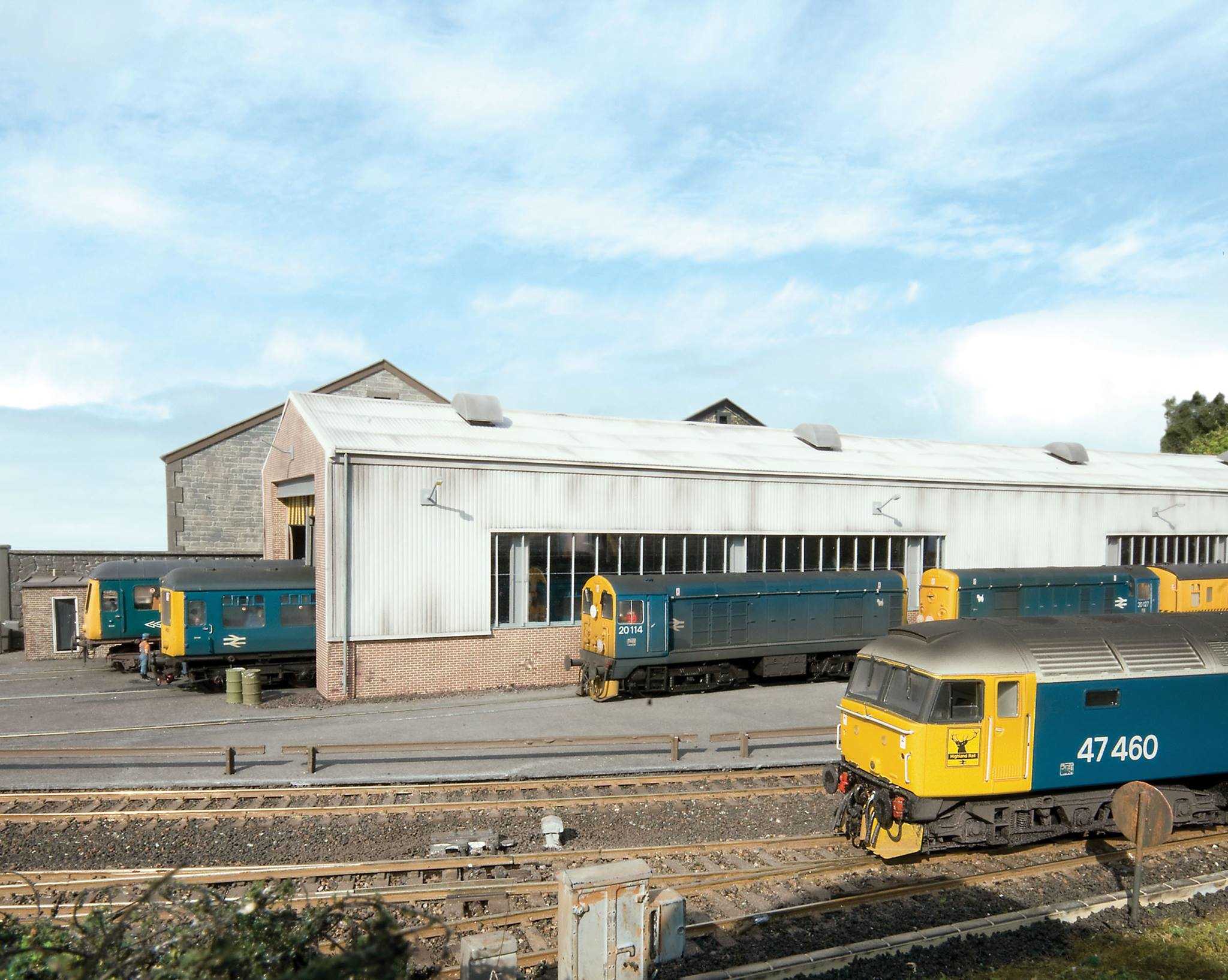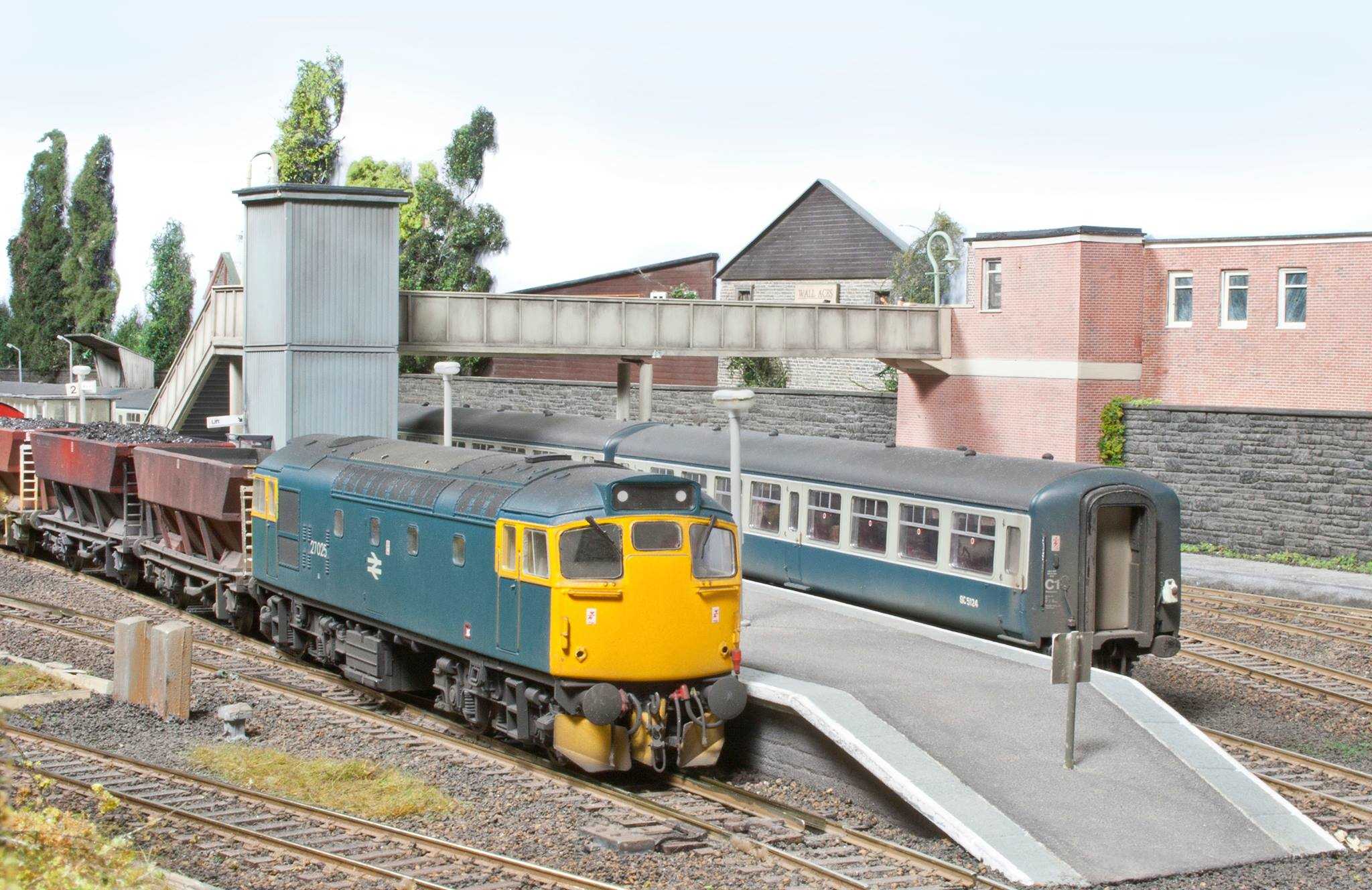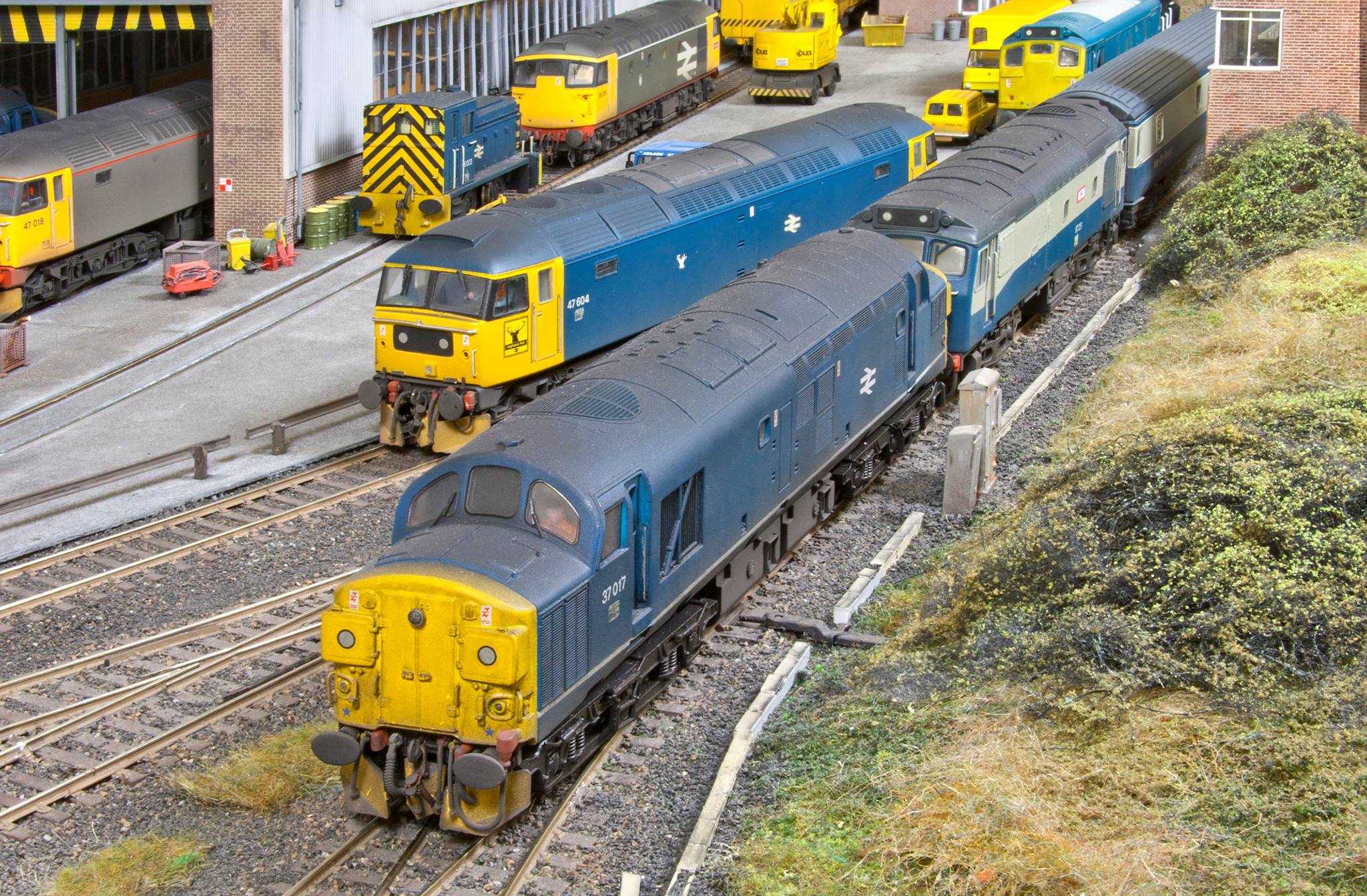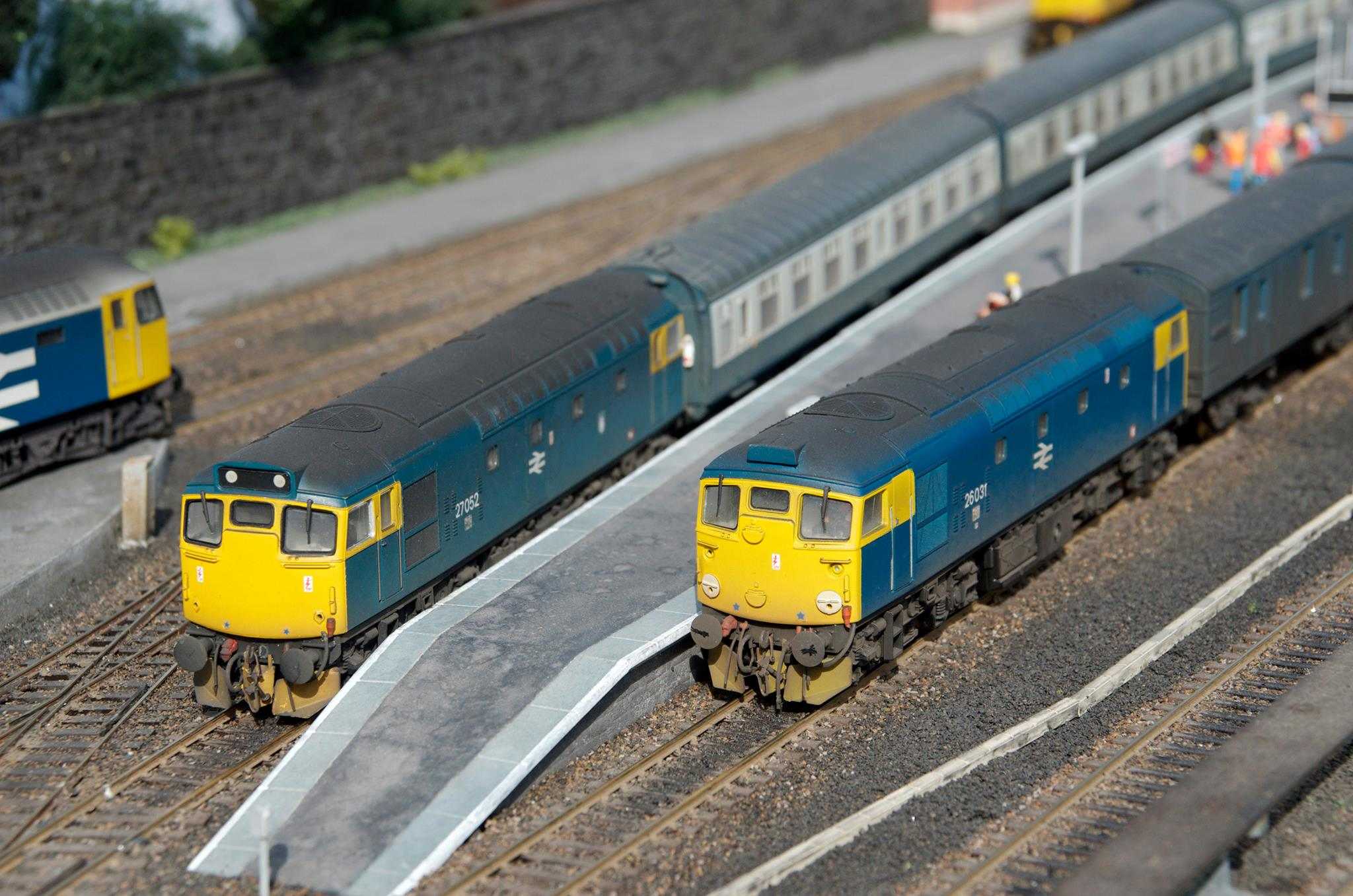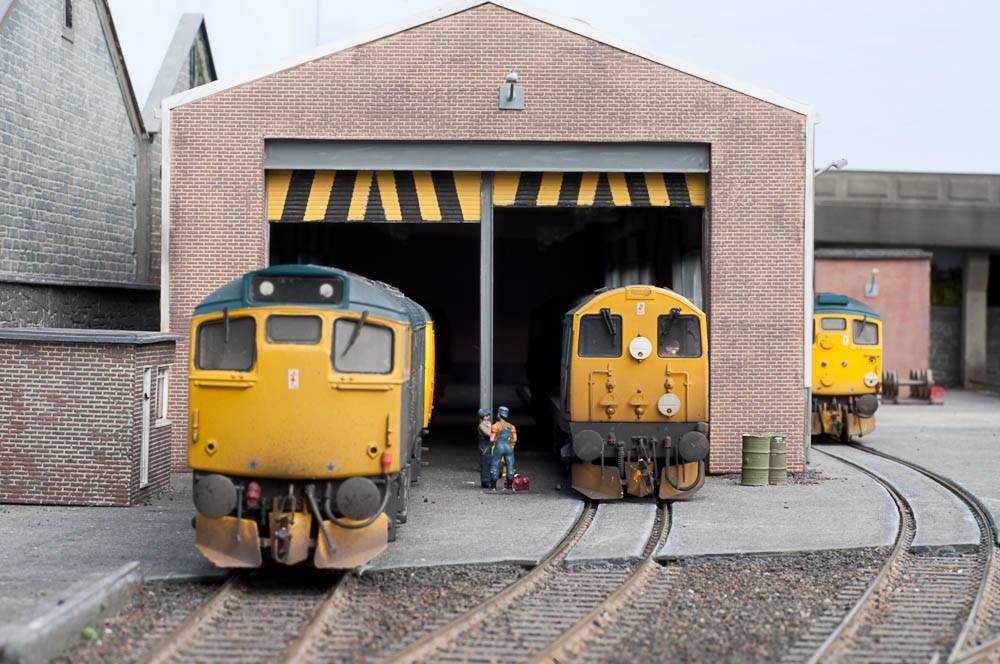**Airthrey Park has now been retired from the British exhibition circuit, and although still fully operational, now resides in Portugal with its owner, Andrew Donnelly**
The purpose of the layout is to reproduce and rekindle the sights, sounds and essence of the era that remains so fondly in the memory of a large number of enthusiasts – that of Scotland in the mid-1980s. This period was full of excitement and change in Scotland, with the region leading the BR corporate image breakdown, as local initiatives designed to improve the railways’ image and bring some pride back into the job, served to spice up what was already a rich and varied railway scene. Whilst by 1986, the BRCW type 2s were in the twilight of their careers, the advent of large logo blue class 37s, ScotRail class 47/7s and orange DMUs made for a magical mix of classic traction and outstanding routes.
The prototypical justification for Airthrey Park is that during the planning of Stirling University in the 1960s, it was decided to build a short branch to the university, just north of Stirling. Passenger services to Airthrey Park are envisaged as hourly links with Glasgow Queen Street (DMUs) and Edinburgh (loco-hauled), extended from Stirling. In addition, terminating TPO and sleeper portions detached at Stirling from Inverness-bound services and sent for servicing can be justified, along with regular trip workings to the maintenance depot and adjacent transit shed bringing a small amount of freight into the station.
A small servicing depot was built to house local freight engines and those from terminating passenger services, along with a DMU and coaching stock servicing platform. Two fuelling points are available to allow locomotive and DMU refuelling along with an associated fuel oil supply depot. Incoming locomotive-hauled services have the stock removed by the resident class 08s pilots, whilst the locomotive retires to the fuelling point or depot.
Layout Development
Overall, Airthrey Park is 7.5 x 0.6 metres, consisting of a 5 metre scenic section with the fiddle yard contained within the right-hand end section when viewed by the public. The layout is DCC wired with operating points positioned both behind the layout and at the front, permitting more interaction with viewers. DCC is limited to operations, with points, signals and lighting remaining under conventional control. Track used is all Peco Code 75 rail. Layout construction began in Porto, Portugal, during 2001, but it was moved to Newcastle in 2003 and on to Stirling in 2005, prior to completion in 2007 and debut show at Ayr during September of that year. It was extended in 2010 with an additional scenic section, which features a small freight transit shed, thus providing extra operating potential and justification for regular trip workings. After just short of a decade on the exhibition circuit in Scotland and England, AP made it’s final (?!) appearance at Perth show in June 2017 and has now been retired ‘back home’ to Portugal.
The scenics, buildings and structures are entirely Malcolm Donnelly’s handiwork, with the architectural style following that of an austere and functional late 1960s style. Malcolm was tasked with researching suitable depots and stabling points around Scotland and northern England looking for inspiration. Having scratch built structures aims to give the layout that intangible edge where the aim is to capture the feel of an era through the key buildings. The most significant building is the running shed, which is loosely based on the Haymarket daily servicing shed, located alongside the main running lines and still in use today. The Airthrey Park shed can house a 3-car DMU, a trio of Type 1s or 2s or a pair of larger locos on each of the two roads. The shed is the inspiration behind the current Hornby diesel maintenance shed offered by this manufacturer. Associated with the running shed is an area of hard standing, allowing vehicle access to the depot and additional stabling sidings, more often than not housing the snowploughs or breakdown van. The fuelling points are based on those at Ayr whilst the oil storage tanks are largely a freehand design, including elements from installations at Eastfield, Haymarket and Corkerhill.
The basic shells of the buildings and structures were built using varying grades of foam PVC. Once assembled, with window and door apertures ready cut out, the buildings were faced with Slater’s Plastikard brickwork effect. The installation of windows and doors came next, these having been built up with styrene strip and sheet from the Evergreen range, as were guttering and handrails. Roofs were made as separate units before being fixed to their walls, the roof and walls of the main depot building, transit shed and fuelling point being adorned with Slater’s corrugated sheet. The liberal use of weathering powders applied to them after painting has produced a prototypical, rather grubby, workaday look. Flat roofs were given a coat of fine cinders scatter material as were the station platform, roads and bridge walls. The finished surfaces then had colour washes applied, whilst the blocks forming the platform edges were made by scoring a strip of PVC foam. The ballast is a mix of fine ballast and cinders from the Woodland Scenics range, whilst around the fuelling and stabling points the ballast and earth have been given a wash of matt black paint to represent deposits of oil.
As well as the major items, the smaller details are equally important as regards setting the scene, complimenting the more obvious structures. Fantastic lighting from Express Models and signals from the Traintronics range, give the layout a great look when the lights go off whilst considerable attention was given to wiring the depot buildings and a range of outside lighting, the resulting effect being superb as it brings the already real buildings to even more life-like levels.
Motive Power & Rolling Stock
The scene is centred on 1985 & 1986 in Central Scotland, so the resident motive power is a selection of personal favourites which fit into the time period. Most of the motive power and rolling stock comes from Andrew Donnelly, Simon Barratt and late Andy Elliott's collection. All stock has full bufferbeam detailing with working 3-link or screw link couplings, wire handrails, roof fans, flush glazing, windscreen wipers and such like being compulsory with full repaints and weathering, whilst every loco and DMU is DCC sound fitted.
The fleet is based on a range of Hornby 08s; Bachmann class 20s, 25s and 37s and Heljan class 26s, 27s and 47s. Backbone of the fleet are the Heljan BRCW class 26s and 27s, the number of which is now into double figures. Several class 26s have undergone major work to bring them up to mid-1980s state, as well as the more recent air-braked refurbished examples. Similar work has been undertaken on the class 27s, whilst the rest of the fleet have seen nothing more than the minimum detailing standard noted above, normally along with full repaints. Most are fitted with South West Digital sound kits, the remainder having a mixture of Howes or Leggomanbiffa chips, with increasing numbers of ESU V4.0 chips. The DMU fleet is of mixed parentage, with Bachmann class 105s, 107s (converted from 108s), Hornby 101s seen alongside DC Kits class 120 set (based on a former Inverness set with extended guard’s area), a class 104 converted from a Hornby class 110, plus a very special unit in the form of pioneer Sprinter, 150001 in correct 3-car formation.
Good use is made of RTR stock, making the most of the expanding number of excellent wagons and coaches coming from manufacturers of late. As the track is Code 75, all older units or stock has been re-wheeled with Romford axles, the newer items being left as original. The RTR stock is supplemented with some kit built and scratch built wagons, all of which have been suitably dirtied and loaded where required. The range of freight and departmental vehicles is variable with revenue earning stock including deliveries of oil, diesel and spares to Airthrey depot as well as general traffic generated by the freight transit shed, bringing a variety of air-braked stock on the regular Speedlink trips. Almost anything departmental can justifiably appear and there are no fixed rakes. Resident departmental stock includes a BTU breakdown coach and a pair of the excellent Britannia Pacific ZZV snowploughs, which can more often than not be found loitering around the depot or yard confines.
Pictures copyright of :- Dave Edmondston & Nigel Burkin

